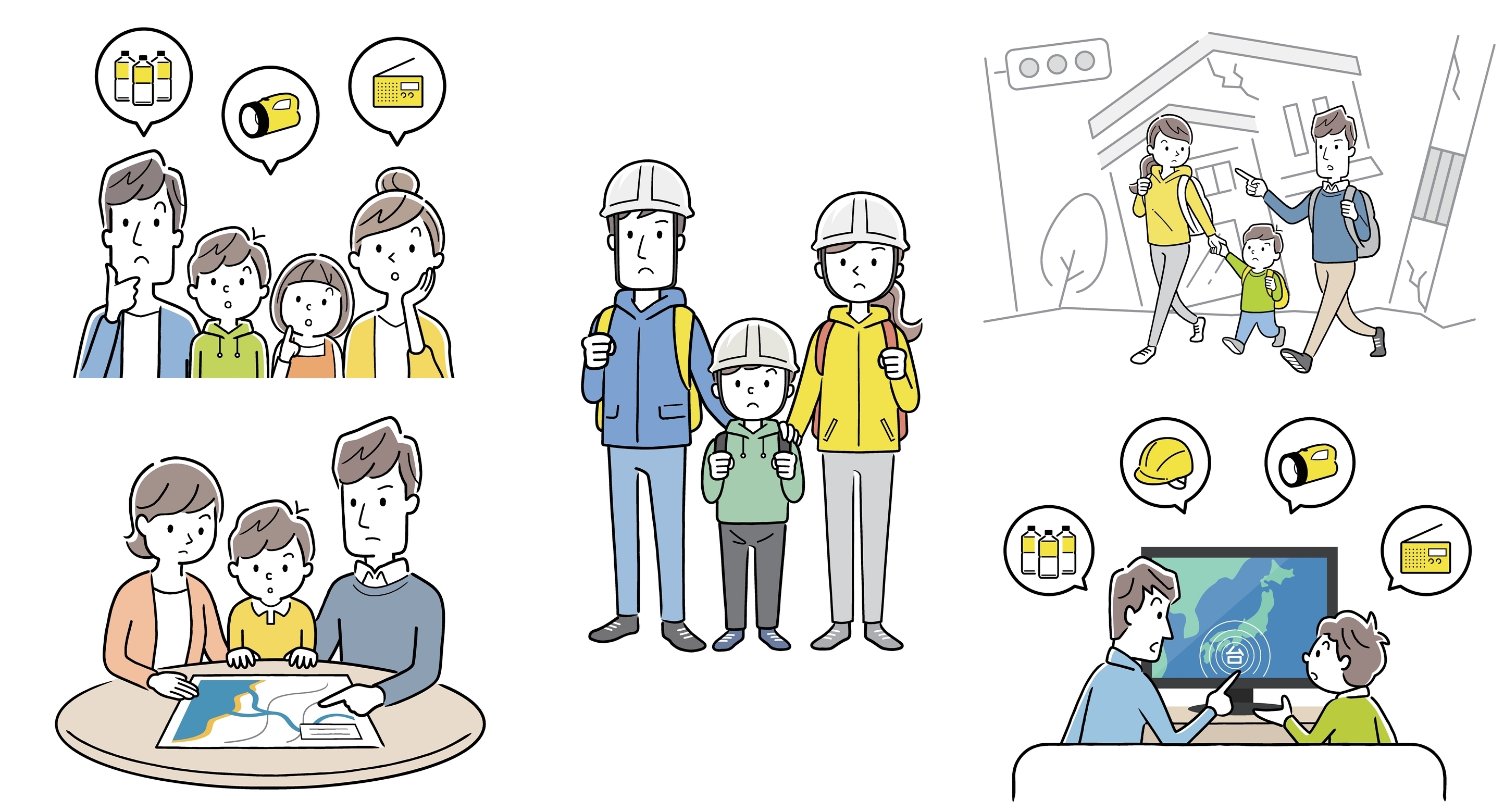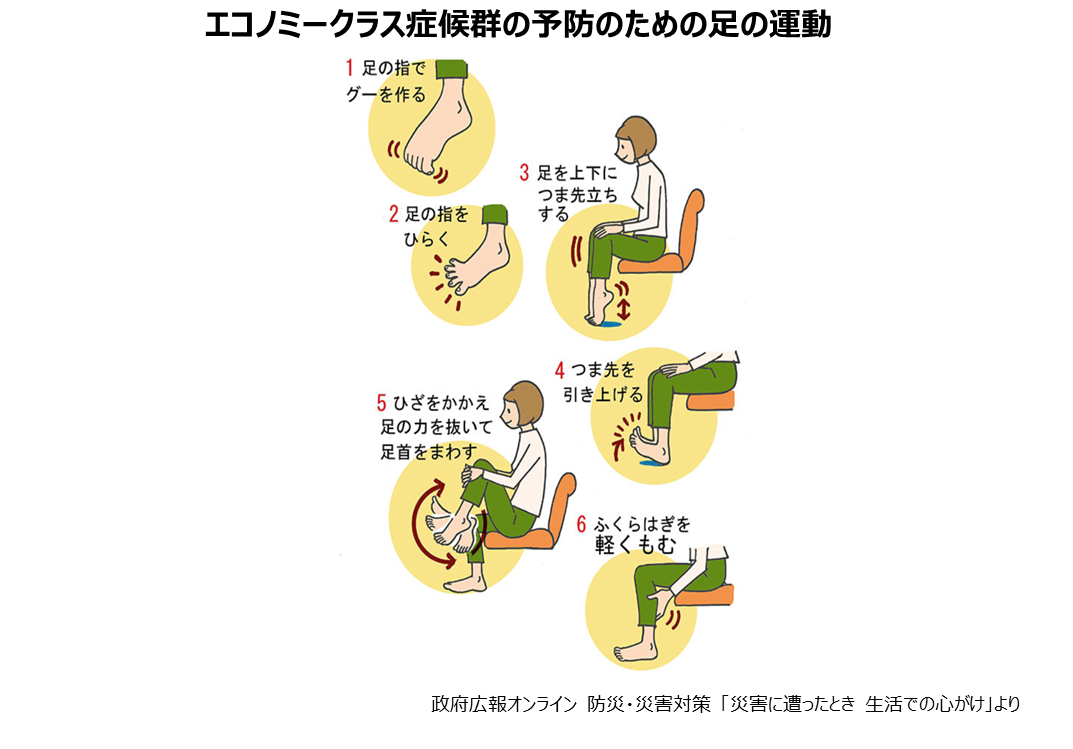ASOURCE®NAVI

公開日:2024.02.27
今年1月に発生した北陸地方を中心とした大地震は、多数の家屋倒壊やライフライン途絶を引き起こし、多くの住民の方々が避難所での生活を余儀なくされています。避難所生活は想像以上に過酷なものであるため、特に冬、地震などの災害時には健康面での注意が必要です。冬の災害時、避難所生活を送るうえで心得ておきたいポイントをまとめました。
災害などにより避難所で生活することになった場合は、感染症に注意が必要です。避難所は多くの人が限られたスペースで生活するため、感染症がまん延しやすい環境です。特に冬季はインフルエンザや新型コロナウイルス、ノロウイルスなどが感染するリスクが高まります。こうした感染を防ぐためには、手洗い、うがい、マスク着用などの基本的な対策が不可欠です。トイレの使用後や食事の前後は必ず手洗いを心がけることが大切です。断水などにより流水で手洗いができない場合には、アルコール等の手指消毒薬を使うことが良いでしょう。うがいは菌やウイルスが粘膜から侵入する前に洗い流したり、のどの乾燥を防ぐ効果があります。
咳やくしゃみといった症状がある方は、避難所内に風邪・インフルエ ンザを流行させないために、軽い症状であってもマスクを着用しましょう。さらに、避難所内での換気や消毒、ソーシャルディスタンスの確保もできる限り心がけましょう。
地震や火災などの災害時には、崩壊した建物から大量の粉じんが舞い上がります。この粉じんを吸入すると、呼吸器疾患を引き起こすリスクが高まります。特に気管支炎や肺炎などにかかりやすくなるため、災害時にはマスクの着用が強く推奨されています。粉じんの主な成分はコンクリートや石膏ボード、アスベストなどの建材です。これらは肺の奥深くまで到達し、肺胞を刺激する小さな粒子です。粉じんを吸入することで呼吸困難や咳、発熱などの症状が現れ、重症化するおそれがあります。粉じんを長期間吸い込んだ場合は、肺に粉じんが蓄積することでじん肺という病気にかかりやすくなります。こうした呼吸器疾患を予防するにはN95マスクが最も効果的ですが、サージカルマスクやウェットティッシュで鼻口を覆うことも呼吸器への粉じんの侵入を防ぎます。マスク等がない場合は手で口を覆うことをおすすめします。災害時には常にマスクを携帯し、粉じんの多い場所では着用することが重要です。
避難所では、気温の低下により寒さ対策が必要となります。その際に利用されるガスや石油ストーブなどの暖房器具による、一酸化炭素中毒に注意が必要です。一酸化炭素は無色無臭の気体で、暖房器具の不完全燃焼によって発生します。換気が不十分な状態で暖房器具を使用すると、一酸化炭素が蓄積し中毒を起こす可能性があります。中毒症状は、頭痛やめまい、吐き気、意識障害などです。このような症状が出た場合は、一酸化炭素中毒の可能性があるため、避難所にいる場合はすぐに職員に相談しましょう。重症化すると昏睡や死に至る危険もあります。対策として、ストーブなどの使用時には必ず換気を行いましょう。窓を開けたり、換気扇を回すなどして、新鮮な空気を取り入れることが重要です。
避難生活では、エコノミークラス症候群にも注意が必要です。長時間同じ姿勢で過ごしたり、水分摂取が不足することで、血行不良が起こり血液が固まりやすくなります。その結果、血の固まりが足から肺などに飛び、血管を詰まらせる肺塞栓などを誘発する恐れがあります。症状は足の痛みや腫れ、熱感、ふくらはぎの痛みなどがあらわれます。進行すると息切れや胸痛などの症状も出てきます。避難所ではスペースが限られるため長時間同じ姿勢になりがちであり、また、トイレの不足や衛生状態の悪化などが原因で水分を取る量も控えがちです。車などの狭い座席に長時間座っていたり、狭い車内などで寝起きを余儀なくされている方も高い発症リスクがあります。予防するためには体を動かす機会を増やすことや、こまめな水分補給が重要とされます。弾性ストッキングを着用して血流を良くすることも効果があります。また、睡眠時間を確保してストレスを解消することも大切です。

メディアスグループは、医療機器の販売を中心とした事業を展開しています。医療に携わる私たち(Medical+us)は、医療現場や人々の健康的な明日へ役立つ情報をお届けする情報発信源(Media)の役割も果たしていきたいと考えています。